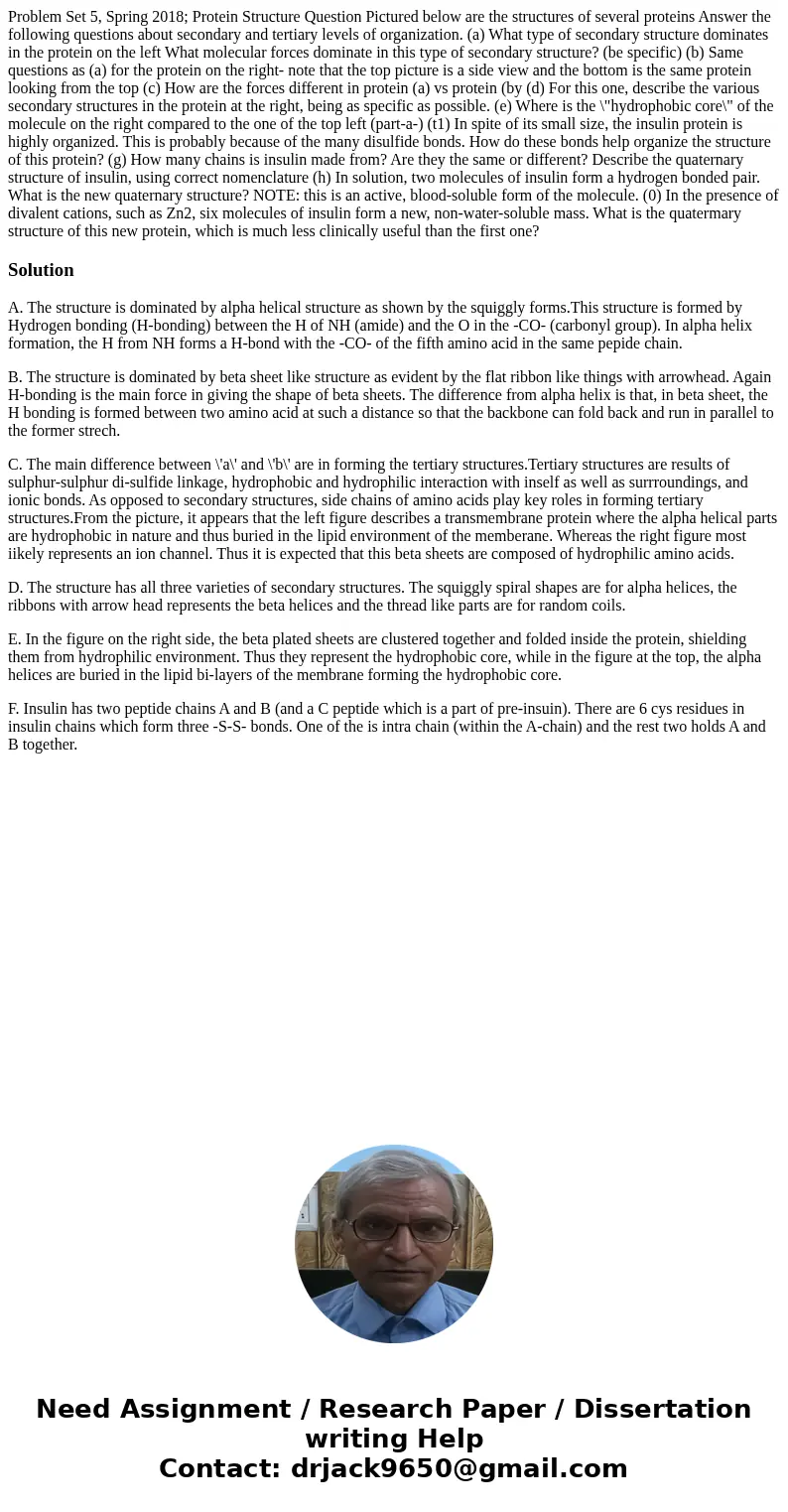Problem Set 5 Spring 2018 Protein Structure Question Picture
Solution
A. The structure is dominated by alpha helical structure as shown by the squiggly forms.This structure is formed by Hydrogen bonding (H-bonding) between the H of NH (amide) and the O in the -CO- (carbonyl group). In alpha helix formation, the H from NH forms a H-bond with the -CO- of the fifth amino acid in the same pepide chain.
B. The structure is dominated by beta sheet like structure as evident by the flat ribbon like things with arrowhead. Again H-bonding is the main force in giving the shape of beta sheets. The difference from alpha helix is that, in beta sheet, the H bonding is formed between two amino acid at such a distance so that the backbone can fold back and run in parallel to the former strech.
C. The main difference between \'a\' and \'b\' are in forming the tertiary structures.Tertiary structures are results of sulphur-sulphur di-sulfide linkage, hydrophobic and hydrophilic interaction with inself as well as surrroundings, and ionic bonds. As opposed to secondary structures, side chains of amino acids play key roles in forming tertiary structures.From the picture, it appears that the left figure describes a transmembrane protein where the alpha helical parts are hydrophobic in nature and thus buried in the lipid environment of the memberane. Whereas the right figure most iikely represents an ion channel. Thus it is expected that this beta sheets are composed of hydrophilic amino acids.
D. The structure has all three varieties of secondary structures. The squiggly spiral shapes are for alpha helices, the ribbons with arrow head represents the beta helices and the thread like parts are for random coils.
E. In the figure on the right side, the beta plated sheets are clustered together and folded inside the protein, shielding them from hydrophilic environment. Thus they represent the hydrophobic core, while in the figure at the top, the alpha helices are buried in the lipid bi-layers of the membrane forming the hydrophobic core.
F. Insulin has two peptide chains A and B (and a C peptide which is a part of pre-insuin). There are 6 cys residues in insulin chains which form three -S-S- bonds. One of the is intra chain (within the A-chain) and the rest two holds A and B together.

 Homework Sourse
Homework Sourse